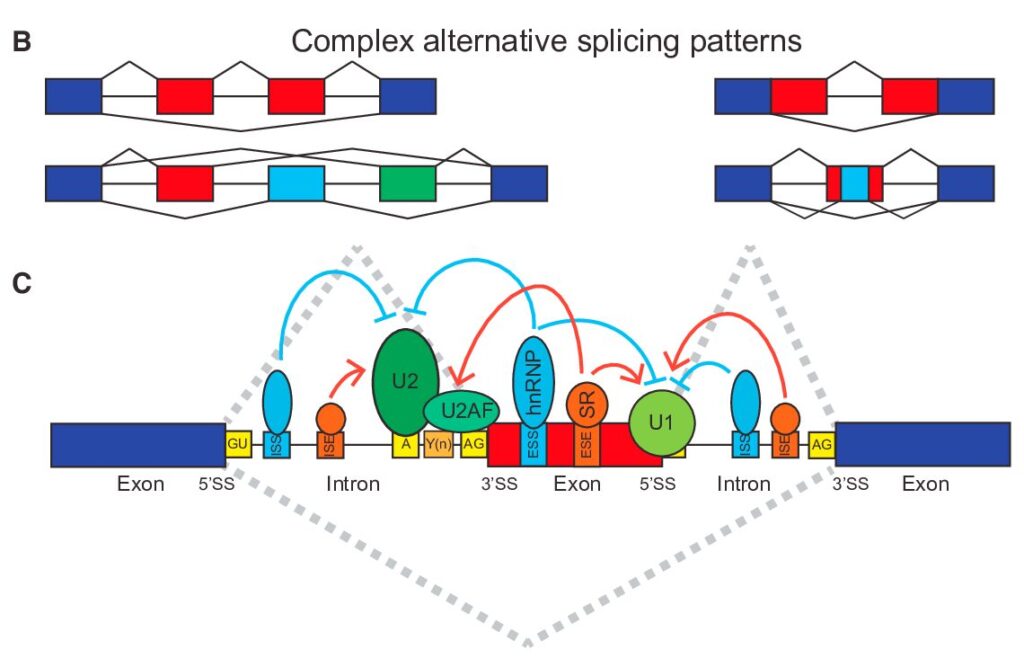Author: Lei
-

How to Analyze RNAseq Data for Absolute Beginners Part 19: Understanding RNA-Seq Gene Expression Normalization
Video Tutorial Introduction: Why Normalization Matters in RNA-Seq Analysis RNA sequencing (RNA-seq) has revolutionized our ability to measure gene expression, but the raw data needs careful processing to yield meaningful biological insights. In this comprehensive guide, we’ll explore why normalization is crucial and how to convert between different expression metrics using R. Building on our…
//
-

How to Analyze RNAseq Data for Absolute Beginners Part 18: Analyzing Viral Gene Expression in Host RNA-seq Data
Understanding viral gene expression patterns during infection is crucial for studying host-pathogen interactions. This comprehensive guide will walk you through the process of accurately quantifying viral transcripts from RNA-seq data of infected host cells, providing you with practical approaches for this challenging analysis. Video Tutorial The Challenge of Viral RNA-seq Analysis When we sequence RNA…
//
-

How to Analyze RNAseq Data for Absolute Beginners Part 16: A Comprehensive Tutorial on Identifying Fusion Genes
Video Tutorial Understanding Fusion Genes: Key Concepts for Cancer Research What Are Fusion Genes and Why Do They Matter? Fusion genes represent a fascinating phenomenon in cancer biology where two previously separate genes join together, often creating proteins with altered or entirely new functions. These genetic mergers typically arise through chromosomal rearrangements like translocations, deletions,…
//
-

How to Analyze RNAseq Data for Absolute Beginners Part 15-2: Mastering UMI-Based miRNA-Seq Analysis
Video Tutorial Understanding UMI-Based miRNA Sequencing MicroRNAs (miRNAs) serve as crucial regulators in gene expression, making their accurate quantification essential for understanding disease mechanisms and biological processes. While traditional miRNA sequencing has proven valuable, the integration of Unique Molecular Identifiers (UMIs) represents a significant advancement in achieving precise miRNA measurements. This tutorial will guide you…
//
-

How to Analyze RNAseq Data for Absolute Beginners Part 15: A Complete Guide to miRNA-seq Analysis
Video Tutorial Understanding the World of microRNAs The fascinating world of microRNAs (miRNAs) represents one of molecular biology’s most elegant regulatory systems. These tiny RNA molecules, spanning just 20-24 nucleotides, function as precise genetic regulators by binding to messenger RNAs (mRNAs) and fine-tuning their expression. Since their serendipitous discovery in the early 1990s, miRNAs have…
//
-

How to Analyze RNAseq Data for Absolute Beginners Part 14: Mastering Small RNA-Seq Analysis
Video Tutorial The Hidden World of Small RNAs: More Than Just Tiny Molecules Small RNAs are fascinating molecules that challenge the traditional “DNA to RNA to protein” dogma of molecular biology. Despite being just 20-30 nucleotides in length – barely a fraction of a typical messenger RNA – these molecules orchestrate complex biological processes with…
//
-

How to Analyze RNAseq Data for Absolute Beginners Part 13: Circular RNAseq Analysis
Video Tutorial Understanding the Biology of Circular RNAs The Nature of Circular RNAs Circular RNAs (circRNAs) represent one of molecular biology’s most fascinating discoveries. Unlike the linear RNA molecules that dominated our understanding of gene expression for decades, circRNAs form continuous loops through a unique process called back-splicing. In this process, a downstream 5′ splice…
//
-

How to Analyze RNAseq Data for Absolute Beginners Part 12: A Step-By-Step Guide for Submitting Your NGS Data to NCBI GEO
Video Tutorial In the world of genomics research, sharing your sequencing data isn’t just a box to check for publication – it’s a fundamental part of advancing scientific knowledge. As researchers, we spend countless hours generating and analyzing Next-Generation Sequencing (NGS) data, and making this data accessible to the broader scientific community ensures our work…
//
-

How to Analyze RNAseq Data for Absolute Beginners Part 11: Mastering Transcript-Level Alternative Splicing Analysis
Video Tutorial From Gene-Level to Transcript-Level Analysis In our previous exploration of gene-level splicing analysis, we laid the groundwork for understanding how alternative splicing shapes gene expression. Now, we’re taking a deeper dive into the fascinating world of transcript-level analysis, where we can uncover the intricate details of how genes produce different protein variants through…
//
Search
Categories
- Database (1)
- Epigenetics (6)
- Metagenomics (1)
- Scientific Programming (2)
- Transcriptomics (21)
Recent Posts
- How To Analyze ATAC-seq Data For Absolute Beginners Part 1: From FASTQ To Peaks
- How To Analyze ChIP-seq Data For Absolute Beginners Part 5: Mastering Reproducibility With IDR Analysis
- How To Analyze ChIP-seq Data For Absolute Beginners Part 4: From FASTQ To Peaks With MACS2
- How To Analyze ChIP-seq Data For Absolute Beginners Part 3: Differential Binding Analysis and Motif Discovery
Tags
Alternative Splicing Analysis batch effects ChIP-seq ComBat-seq Counts covariates adjustment CPM Data Sharing DESeq2 Differential Expression edgeR FPKM gene expression HOMER HPC Isoform limma MACS2 miRNA miRNA-seq mixed linear models Normalization peak calling Quantification Salmon TPM Transcript Virus Virus-Host Virus Gene Expression




